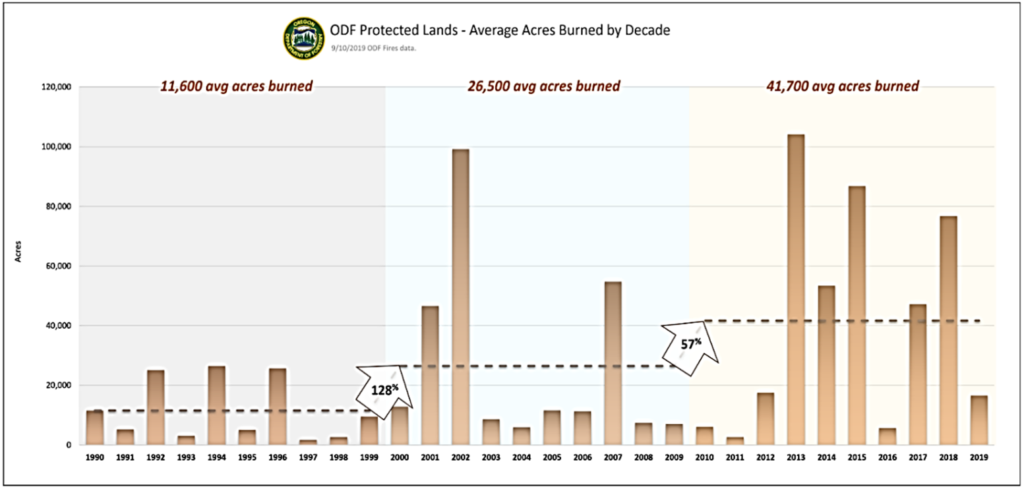Wildfires are getting worse in Oregon. Climate-change-induced drought and hotter weather are the causes.
In response, Governor Kate Brown issued Executive Order 19-01 on January 30, 2019. This began the Governor’s Council on Wildfire Response. The Council reviewed Oregon’s model at the time to prevent, prepare and respond to wildfire. Then it developed ways to improve.
The Council adopted the “National Cohesive Wildland Fire Management Strategy”. This has three goals:
- Create fire-adapted communities.
- Restore and maintain resilient landscapes.
- Respond safely and effectively to wildfire.
Oregon must make broad changes in all three areas.
One “highest priority” recommendation from the Council, Recommendation 6, centers on health and filtered air. The Council concludes that air filtration systems can reduce the harmful effects of smoke. From Day 1, BuildingLens has been designed to respond to outside threats like wildfires. We remotely manage the air systems to balance air quality and energy efficiency[1].
The Council suggests that Oregon create a new funding program. This would speed up the demand for air filtration systems for low-income homes and small businesses. Costs can start at $500 for a personal use system. They go up to $30,000 or more for a commercial system installed in an adult care facility.
Our energy experts offer low-cost solutions to low-income communities by sharing the savings with them. Also, our engineers can help them sift through a growing number of debt-free funding sources for building upgrades.
Let BuildingLens Magnify
Your Building Today.
Recommendation 7 from the Council is meant to remove barriers to installing air filtration systems. One barrier we know well: Most buildings lack proper air filtration systems. Sadly, the cost burden of upgrades is often more for older adults living on a fixed income, families, and people living with fewer means. (The reasons are clear as we’ve described in a previous blog.)
We’re proud that the work that BuildingLens has been doing all along is in direct support of the state’s wildfire goals. We’re excited to be a part of the strategy that makes our state more wildfire resilient, especially for those most in need of climate justice.
Contact BuildingLens today, before wildfire season really gets started. Let’s find out how we can reduce utility costs and increase tenant comfort. Your tenants and residents will thank you for it!
[1] Our strategy is to flush the building with fresh air for as long as possible between when we know the smoke is on the way and when it arrives. Then, when smoke arrives, we close the vents to the building. After the smoke is gone, we return to normal building operations. Even though flushing the building uses a lot of power, this approach still saves energy over time. This aligns well with the Council’s recommendations and goals.
